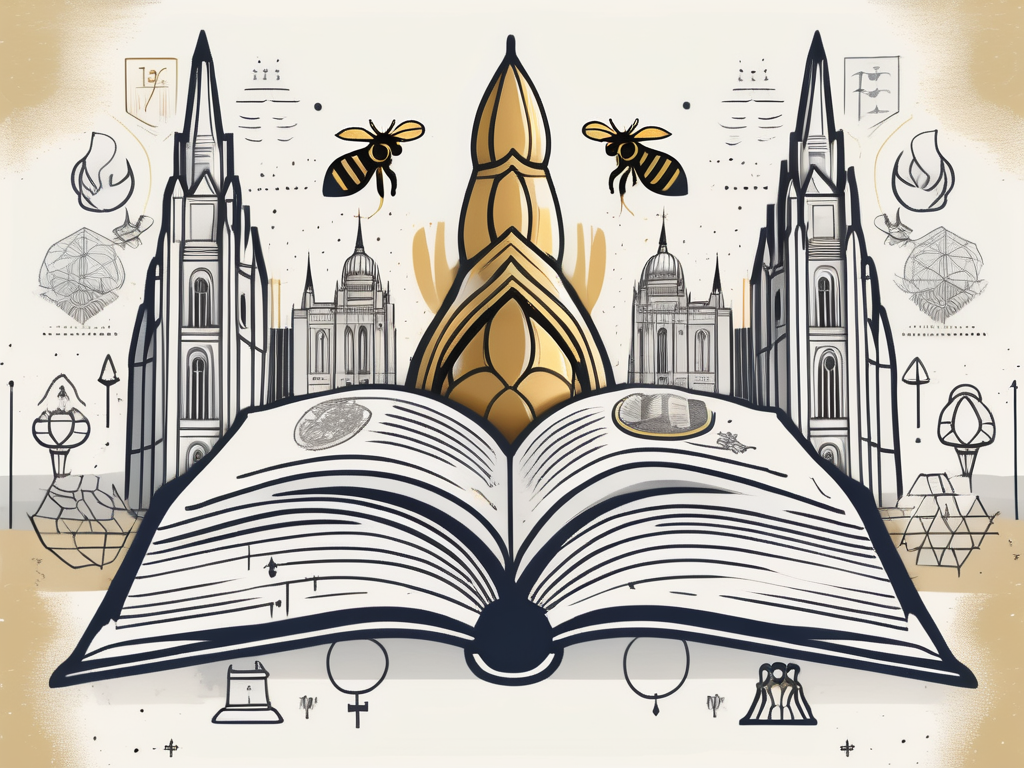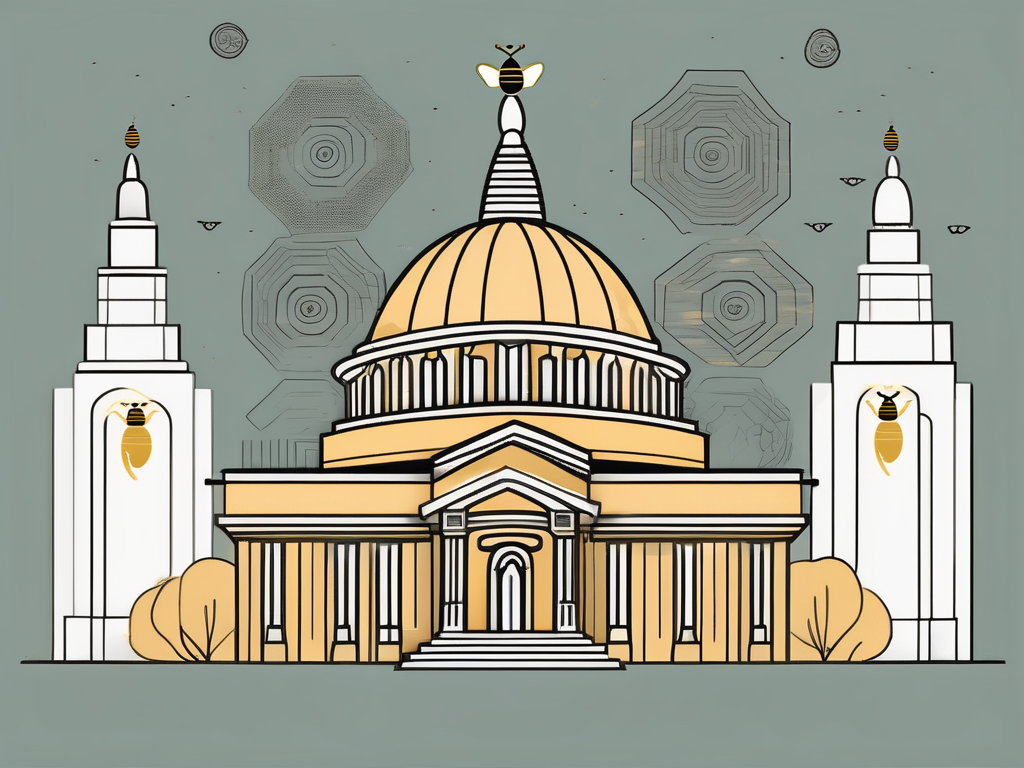The Book of Mormon is a sacred text that holds great significance in the religious beliefs of the Church of Jesus Christ of Latter-day Saints (LDS). It is regarded by members of the LDS Church as an additional testament of Jesus Christ, alongside the Bible. While some may be familiar with the title, the origins and contents of this book might not be as well-known. In this article, we will delve into the various aspects of the Book of Mormon, providing insights into its creation, structure, significance within the LDS Church, controversies surrounding it, and its impact on popular culture.
Understanding the Origin of the Book of Mormon
One of the key figures associated with the creation of the Book of Mormon is Joseph Smith. As the founder of the LDS Church, Smith claimed to have been visited by God and Jesus Christ in 1820. Through subsequent revelations and encounters with heavenly beings, Smith said he was led to a set of golden plates, which he translated into what is now known as the Book of Mormon.
Smith’s involvement in the creation of the Book of Mormon has been a subject of much discussion and debate. Critics argue that he fabricated the story and wrote the book himself, while believers maintain that it is an authentic ancient record translated by divine means.
The Role of Joseph Smith in its Creation
Joseph Smith is believed by LDS Church members to have been the chosen prophet to bring forth the Book of Mormon. According to Smith’s account, he translated the text from the golden plates by the power of God using seer stones. This process involved dictating the words to scribes who recorded them.
Smith’s ability to translate the ancient record has been a source of fascination and wonder. The method of using seer stones to receive divine revelation is a unique aspect of Smith’s translation process. It is said that the stones allowed him to see the words on the plates and understand their meaning, enabling him to accurately convey the message of the Book of Mormon.
While the details surrounding the translation are not fully understood, Smith’s role in bringing forth the Book of Mormon is considered by followers as a pivotal moment in the restoration of Christ’s true church on Earth. His dedication and commitment to the task of translating the ancient record have inspired countless individuals to study and embrace the teachings found within the Book of Mormon.
Historical Context of the Book’s Emergence
The emergence of the Book of Mormon took place during a time of religious fervor and social upheaval in early 19th-century America. The book claims to be an ancient record of indigenous inhabitants of the Americas and covers a span of thousands of years, from around 2500 BC to AD 421.
Its publication in 1830 generated both intrigue and controversy, as it presented a narrative that challenged prevailing religious beliefs of the time. The historical context in which the book emerged adds another layer of complexity to its significance. The early 19th century was a period marked by religious revival movements, such as the Second Great Awakening, which sought to reinvigorate faith and promote spiritual growth.
The Book of Mormon, with its unique narrative and claims of divine origin, captured the attention of many individuals seeking religious truth and meaning. Its publication coincided with a time of intense religious exploration and experimentation, making it a subject of great interest and debate among scholars, theologians, and the general public.
Furthermore, the book’s assertion of the existence of ancient civilizations in the Americas challenged prevailing notions of the continent’s history. It presented a different perspective on the origins and development of human civilization, prompting discussions about the nature of archaeological evidence and the interpretation of historical records.
Overall, the historical context in which the Book of Mormon emerged adds depth and richness to its significance. It reflects the religious and intellectual climate of the time, while also providing a unique perspective on the ancient history of the Americas. The ongoing study and exploration of the book continue to fuel scholarly inquiry and spiritual reflection.
The Structure and Content of the Book of Mormon
Composed of several books, the Book of Mormon is organized into chapters and verses like the Bible. It consists of accounts written by various prophets who lived on the American continent. These prophets sought to teach about God’s dealings with humankind and the importance of Jesus Christ’s atoning sacrifice.
The Book of Mormon is a rich and complex text, filled with fascinating narratives and profound teachings. Let’s delve deeper into its structure and content to gain a deeper understanding of this sacred scripture.
An Overview of the Various Books Within
The Book of Mormon is divided into smaller books, each attributed to a specific prophet. These prophets include Nephi, Alma, Mormon, and Ether, among others. Each book provides unique perspectives on religious teachings, historical events, and the overall narrative of the book.
The first and second books of Nephi, for example, recount the journey of Lehi and his family from Jerusalem to the promised land. These books also contain the prophecies of Nephi, who saw the future of his people and the coming of Jesus Christ.
The Book of Alma, on the other hand, focuses on the teachings and ministry of Alma, a righteous Nephite leader. It explores themes of repentance, faith, and the importance of standing firm in the face of adversity.
The Book of Mormon, named after the prophet Mormon, is a compilation of records from different time periods. It provides a sweeping narrative of the rise and fall of civilizations, showcasing the consequences of righteousness and wickedness.
The Book of Ether, the final book in the Book of Mormon, tells the story of a group of people called the Jaredites. It offers insights into their journey to the Americas and their eventual downfall due to their pride and wickedness.
Key Themes and Messages
The Book of Mormon addresses various themes that resonate with LDS Church teachings. These include faith in Jesus Christ, repentance, baptism, charity, and the importance of divine revelation. It also depicts the rise and fall of civilizations, highlighting the consequences of adherence to moral principles or moral decline.
One of the central messages of the book is the invitation to come unto Christ and experience spiritual transformation. It emphasizes the role of personal righteousness and the pursuit of virtuous living. Through its stories and teachings, the Book of Mormon encourages individuals to seek a personal relationship with God and to follow the example of Jesus Christ in their daily lives.
Furthermore, the Book of Mormon provides insights into the nature of God and His plan for His children. It teaches about the eternal nature of the soul, the reality of the Atonement, and the hope of salvation. These teachings offer comfort and guidance to those who seek a deeper understanding of their purpose in life.
As you explore the pages of the Book of Mormon, you will discover a treasure trove of wisdom, inspiration, and guidance. Its teachings have the power to uplift and transform lives, providing a roadmap for individuals to navigate the challenges of mortality and draw closer to God.
The Significance of the Book of Mormon in the LDS Church
Within the LDS Church, the Book of Mormon holds a central place in doctrine and worship. It is considered a companion scripture to the Bible and is regarded as a witness of Jesus Christ’s divinity.
The Book of Mormon, a sacred text of the Latter-day Saints, is a record of ancient prophets who lived on the American continent. Its significance lies not only in its historical and religious value but also in its profound impact on the lives of individuals and the collective faith of the LDS Church.
The Book of Mormon and LDS Doctrine
LDS Church members believe that the Book of Mormon contains the fulness of the gospel of Jesus Christ and complements the teachings found in the Bible. It touches upon doctrines such as the nature of God, the plan of salvation, the role of prophets, and the eternal nature of families.
Within its pages, the Book of Mormon provides a deeper understanding of God’s plan for His children and offers insights into the purpose of life, the nature of faith, and the importance of personal righteousness. It serves as a guide for individuals seeking to align their lives with the teachings of Jesus Christ.
Many consider the Book of Mormon as a source of spiritual guidance and draw upon its teachings to navigate the challenges of everyday life. Its stories and principles provide a framework for making decisions, finding peace, and developing a closer relationship with God.
Its Role in Worship and Personal Study
In religious services and personal devotion, the Book of Mormon is frequently read, studied, and referenced. LDS Church members seek to gain personal insights and spiritual guidance by immersing themselves in its teachings.
Through regular study of the Book of Mormon, individuals strive to develop a deeper understanding of the principles of faith, repentance, baptism, and receiving the Holy Ghost. They seek to apply these principles in their lives and draw closer to God.
Additionally, passages from the Book of Mormon are commonly shared in sermons, lessons, and discussions within the LDS community, serving as a source of inspiration and encouragement. The stories of faith, courage, and redemption found in its pages resonate with individuals of all ages and backgrounds.
Furthermore, the Book of Mormon is often used as a tool for missionary work. LDS missionaries share its teachings with individuals and communities around the world, inviting them to read and pray about its message. Many individuals have found solace, hope, and a sense of purpose through their encounter with the Book of Mormon.
In summary, the Book of Mormon plays a significant role in the LDS Church, shaping its doctrine, worship, and personal study. It serves as a testament of Jesus Christ’s divinity and provides guidance and inspiration to individuals seeking to live according to His teachings. Its influence extends beyond the confines of the LDS Church, touching the lives of millions who have encountered its powerful message.
Controversies and Criticisms Surrounding the Book of Mormon
As with any religious text, the Book of Mormon has faced scrutiny and criticism from skeptics and scholars alike. Some of the main areas of contention revolve around historical and archaeological discrepancies as well as theological debates.
Archaeological and Historical Discrepancies
Critics argue that the absence of concrete archaeological evidence supporting the book’s historical claims undermines its credibility. The book describes ancient civilizations and cultures in the Americas that have not been substantiated through traditional archaeological methods.
However, supporters of the Book of Mormon point to ongoing research and interpretations that suggest alternative understandings of the book’s history.
Theological Debates and Disputes
The unique doctrines and teachings presented in the Book of Mormon have also sparked theological debates. Some individuals question its compatibility with traditional Christian beliefs and leveling accusations of heresy.
Others engage in scholarly examinations of the book’s theology, seeking to understand its place within the broader religious landscape.
The Influence of the Book of Mormon on Popular Culture
Besides its religious significance, the Book of Mormon has made its mark on popular culture in various forms, including literature and film.
The Book of Mormon in Literature and Film
Authors, artists, and filmmakers have drawn inspiration from the Book of Mormon, incorporating its themes and narratives into their works. Whether as a subject of literary analysis or as an influence on storytelling, the book’s impact can be seen in numerous artistic expressions.
Impact on Social and Political Discourse
The Book of Mormon has occasionally entered the realm of social and political discussions. Its teachings on morality, justice, and individual responsibility have influenced certain aspects of public discourse and policy debates.
Moreover, the LDS Church’s adherence to certain principles outlined in the Book of Mormon has shaped its stance on specific social and political issues.
In Conclusion
The Book of Mormon holds a central place in the beliefs and practices of the LDS Church. Its origin, content, and significance offer insights into the faith and teachings of its adherents. While controversies and debates surround this sacred text, its enduring impact on religious life and popular culture cannot be denied. Whether approached from a perspective of faith or curiosity, exploring the Book of Mormon can provide a deeper understanding of its place within the religious and cultural landscape.












